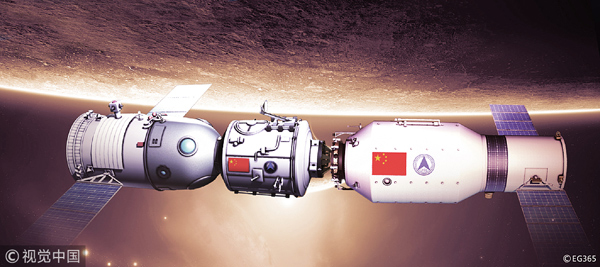Something you may want to know:

1. When will it be burned?
The current best prediction is 1 April (no, this is not an April Fool’s joke). But again, because of its speed, it could be at least a day either side of that.
2. Where is the most likely fall place for debris of Tiangong1 ?
The Aerospace Corporation, a nonprofit organization in the United States, estimated that the re-entry of Tiangong I would occur over Spain, France or Portugal, though an exact location is still hard to pinpoint.
3. Is it possible hit us by debris ?
No. The chances of being hit by part of the space station are basically zero. In terms of size, Tiangong-1 is only the 50th largest spacecraft to come down, and there have been no recorded deaths or injuries from people being struck by debris from any of them. However, a highly toxic and corrosive substance called hydrazine, which is often used in creating potent rocket fuel, can potentially survive re-entry. "For your safety, do not touch any debris you may find on the ground or inhale vapors it may emit," an online statement released by the space agency said.
4. What did Tiangong 1 do in space ?
It was launched unmanned but was designed to be habitable, to test docking with other craft, and to be used for conducting experiments. Tiangong I had completed six space rendezvous and docking missions with three visiting spacecraft. The first visit was by an unmanned spacecraft called Shenzhou VIII in November 2011, as part of China's first space docking mission. The second and third missions were both manned: Shenzhou IX in June 2012 and Shenzhou X in June 2013. Both manned missions had three astronauts and lasted about two weeks, during which the astronauts tested the station's various systems and living conditions.











